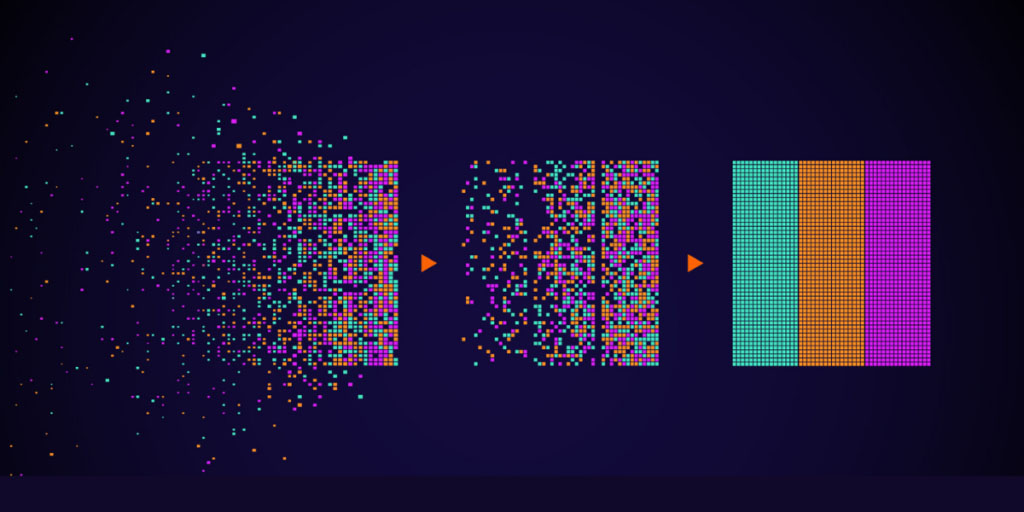5 Ways To Separate The Successful Supply Chains From The Rest
New computers can analyse a million rows of data in minutes. So why not let the computer do the heavy lifting? As a supply chain professional of the future, you won’t be manually processing data. You will have data you can trust at your fingertips, as well as meaningful insights. The rest will be up to you! IBM’s Takshay Aggarwal explains.

In the future, what will separate the successful supply chains from the rest?
Procurious Founder Tania Seary sat down with Takshay Aggarwal from IBM to get his take on where we are, and where we are going.
Everything has changed
In 20 years of supply chain experience, Takshay has never seen a supply and demand shock at the same time.
“It’s completely changed how supply chain planning is done,” Takshay says.
Before, people used historical data to project demand – usually with a 5-10% variability or 1-2% percent for really mature organisations.
But even with a high level of accuracy, too many companies were unsure which supplies were coming when.
“Processes were so monthly and weekly orientated,” Takshay adds. “There was no sense of response; it was all about, ‘We’re used to this stepwise process and will get to it when we get to it.”
The result? Slow response time and lost sales. And reaction time was seriously hampered by years of cost cutting.
“An easy analogy is that you can cut and cut the fat to the bone, but when you need to run, where is the muscle?” Takshay says.
Sensing the market
That’s not true for all organisations, of course. Some companies invested in the right technology to detect changes in the market, which enabled them to respond quickly.
Takshay uses the example of two big retailers during the early days of the pandemic.
“One retailer had sensing and response capabilities,” Takshay explains. “They secured all the available supplies in the market. Their shelves were stocked and their sales were booming.”
On the other hand, the second retailer’s supply chain officer was slow to respond. “They had traditional ways of doing stuff and their shelves were empty.”
The difference between the two? “One supply chain officer is now promoted to the board and the other is finding a new job.”
That’s why it’s so crucial to have the tools in place to detect market fluctuation and respond.
Looking at data differently
Going forward, how will you prepare for disruption – not only for your suppliers, but your suppliers’ suppliers?
The solution is incorporating non-traditional data for demand planning, Takshay says.
“Let’s say a discretionary spend category like electronics or fashion; you need to understand how unemployment is panning out in certain areas because that determines the footfall in your store,” Takshay says.
Non-traditional data includes areas of demographics like looking at unemployment or how a disease is spreading.
“You will start seeing a lot of what we call demand sensing in the near term, and driver-based forecasting which is trying to understand larger drivers in terms of promotions, in terms of macroeconomic factors,” Takshay explains.
“I think that’s where we’ll see demand sensing capabilities, like trying to understand the near term impact of weather or demographics and how they affect demand.”
Spreadsheets won’t cut it
Technology will also change how you use that non-traditional data, Takshay says.
That’s because higher computational power creates the ability to process data at lightning speed.
“The basic math hasn’t changed, but what has changed is how fast you can ingest that data,” Takshay says.
Think of it this way. How long would it take you to analyse a million rows in an Excel spreadsheet? Yet for some of these new models, a million rows is nothing.
Artificial intelligence can quickly process large amounts of data, making it easier to extract meaningful data.
It will also be easier to bring in different sources of data – as and when – they’re relevant.
For example, data about the pandemic spread might be a big consideration now, but six months from now it might not be relevant (fingers crossed!)
Instead, you may be more interested to ingest data at scale about economic recovery. AI can help you make sense of a huge amount of data and understand correlations – something that used to take an army of data scientists to uncover.
Welcome to efficiency
That ability to analyse vast quantities of data will also make demand planning a lot easier.
“If you ask any demand planners, 60 to 70% of their work today is about cleansing and harmonising data, and 20-30% is figuring out what it’s saying,” says Takshay.
Now, technology can eliminate much of that manual processing. In fact, Takshay says IBM estimates around 40 to 60% of that work will be covered.
“Now imagine if you’re a demand planner and you don’t have to go through those daily tasks to get the data cleansed,” Takshay says.
Making it personal
So what does the future hold for supply chain?
Takshay predicts consumer demand is moving toward mass personalisation. The challenge for procurement teams will be supporting that personalisation in production, without losing efficiency or driving up costs.
“Ten years from now, we will be talking more about how we can better understand the consumer,” Takshay says.
“Everything will be done by machine. Supply chain may become irrelevant. It all becomes about mass personalisation so that’s where we start putting our efforts.”
That’s why human empathy will be an even more essential skill. Quantum computing could eliminate 80% of today’s procurement tasks, so our greater contribution is using human emotion to meet customer needs.
Hear Takshay’s full talk with Tania Seary in our exclusive webcast series The Future of Supply Chain Now.